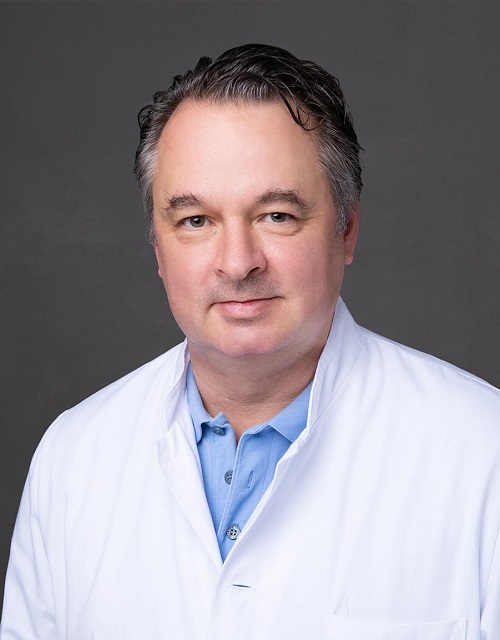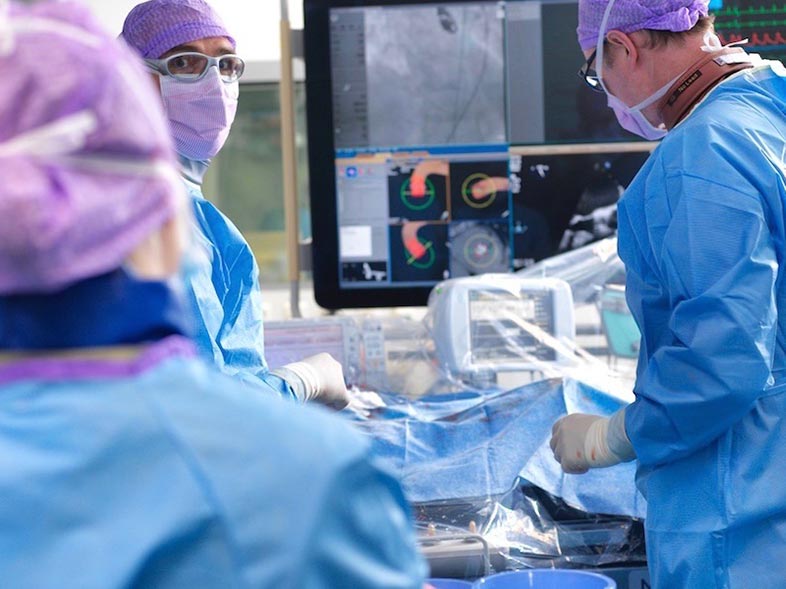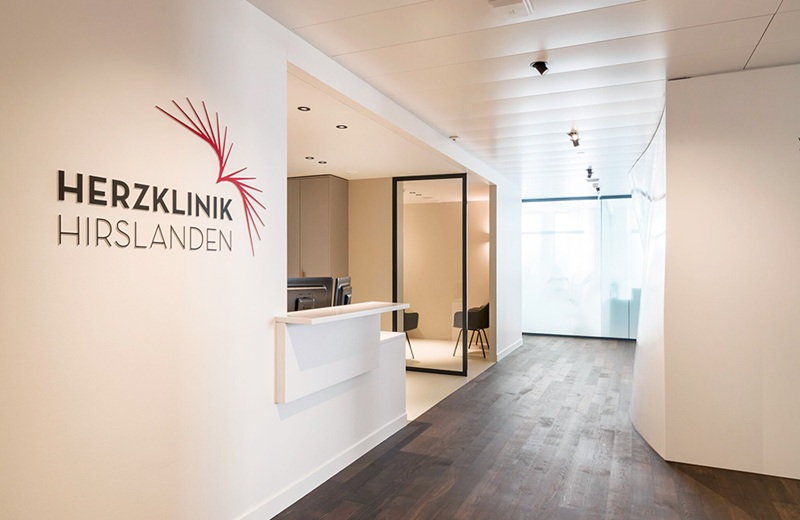Switzerland’s first use of a new clip procedure on the tricuspid valve

Prof. Dr. med. Roberto Corti – Medical Director – Interventional Cardiology – HerzKlinik Hirslanden
On February 20, 2018, a team from the Hirslanden Heart Clinic in Zurich used a newly designed clip to treat a leaking heart valve (tricuspid valve) for the first time in Switzerland. The two interventional cardiologists Prof. Roberto Corti and Prof. Peter Martin Wenaweser are responsible for the new procedure, along with the imaging specialist PD Dr. Patric Biaggi. The intervention is minimally invasive and therefore offers the possibility of treating patients gently and without opening the chest.
Newly designed clip technology for the tricuspid valve
The clip technology was redesigned for use on the right-sided tricuspid valve. Based on the extensive experience with the use of clips on the mitral valve (left-sided heart valve), the
system can also be transferred to another heart valve. However, the technique and the clip had to be adapted to the different anatomy. Without effective treatment of severe tricuspid insufficiency, there is a risk of severe cardiac insufficiency. Until now, leaky tricuspid valves could only be treated surgically or with medication, although open heart surgery is often too risky. Medication cannot eliminate the cause of the insufficiency and cannot significantly influence the course of the disease.
Intervention on the beating heart

Prof. Dr. med. Peter M. Wenaweser – Interventional Cardiology – HerzKlinik Hirslanden
The catheter with the clip, which reconnects the leaking parts, is inserted directly into the right ventricle via the inguinal vein. The minimally invasive procedure is performed under short anesthesia and on a beating heart. The clip is optimally placed under 3D echocardiography and then released if the functional result is good. The metal clip remains permanently in the heart valve and grows in after around six months.
Improved quality of life and performance
This new minimally invasive procedure was used for the first time in Switzerland on February 20, 2018. After the one-and-a-half-hour procedure, the 75-year-old patient was able to leave the Hirslanden Clinic in good health after just two days. The patient’s quality of life and performance improved considerably shortly after the procedure. The aim now is to gain experience with the new technology in other patients. These will be selected for the new procedure after thorough preliminary clarification. Criteria include the anatomy of the valve and the cause of the leak.
Interdisciplinary feat

PD Dr. med. Patric Biaggi – Imaging Cardiology – HerzKlinik Hirslanden
There are two challenges when inserting the tricuspid clip: “On the one hand, it is important to ensure visibility, as we are not working on an exposed heart. And on the other hand, the perfect placement of the clip when the heart is beating and the valves are in motion,” says Prof. Dr. med. When using the clip, the surgeon’s experience and dexterity are crucial. “We use a combination of D3 ultrasound and a special X-ray procedure to ensure precise control and exact positioning of the clip,” adds Prof. Peter Martin Wenaweser, MD. Teamwork is crucial. Only when the two interventional cardiologists and the specialists for the imaging procedures work hand in hand can the interdisciplinary feat succeed.
Source: Media release March 8, 2019 (Klinik Hirslanden)


